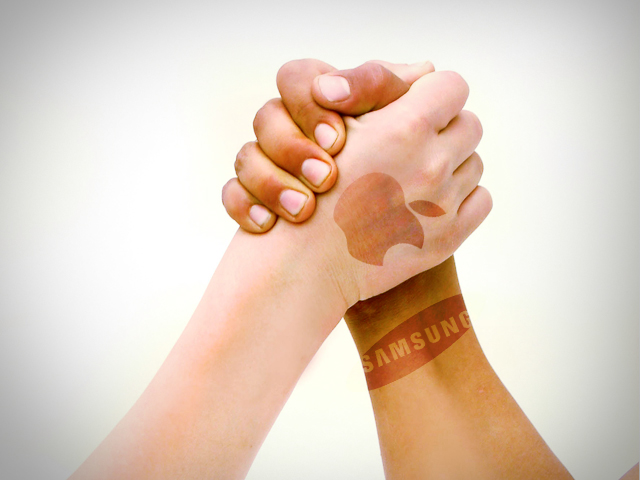 According to The Korea Times, Samsung plans to fan the flames of its ongoing patent battles with Apple by suing the company over the iPhone 5 at launch. Insiders have reportedly revealed Samsung will attempt to block sales of the highly-anticipated phone in Korea as a form of retaliation.
According to The Korea Times, Samsung plans to fan the flames of its ongoing patent battles with Apple by suing the company over the iPhone 5 at launch. Insiders have reportedly revealed Samsung will attempt to block sales of the highly-anticipated phone in Korea as a form of retaliation.
“Just after the arrival of the iPhone 5 here [South Korea], Samsung plans to take Apple to court here for its violation of Samsung’s wireless technology related patents,” a Samsung senior executive who wished to remain unnamed told The Times. “For as long as Apple does not drop mobile telecommunications functions, it would be impossible for it to sell its i-branded products without using our patents. We will stick to a strong stance against Apple during the lingering legal fights.
Samsung and Apple have had a confusing relationship. Samsung has been a major parts provider to Apple – in fact, Apple is speculated to spend some $7 billion on Samsung hardware components over 2011 and the manufacturer makes a surprising amount of what goes into the iPhone 4. Despite this partnership of sorts, the two have engaged in full-on war over their respective Galaxy S and Galaxy Tab and iPhone and iPad lineups. These conflicts date back to April 2011, when Apple made the first strike by suing Samsung over its Galaxy lineup and Samsung countersued, accusing Apple of infringing on a variety of its patents.
Lately, Apple has been coming out ahead. It was able to block the Galaxy Tab 10.1 in Germany, with other attempts and successful bans throughout Europe. Samsung, for the most part, has been playing defense against Apple’s various suits, but if the rumors are true the iPhone 5 will mark a major offensive move and likely escalate the patent battle.
What about the iPhone 5 infringes on Samsung’s patents remains to be seen, but Apple is expected to announce the handset within the coming weeks. There is a possibility Samsung is simply all talk, as insiders suggest the company is hesitant to launch such a major suit against its biggest customer. And the fallout from blocking the iPhone 5 won’t just be felt by Apple: Korea’s wireless carriers will undoubtedly be hurt as well. Samsung’s feeling Apple’s pressure, and we wouldn’t be surprised if this whole thing is a ruse to try and instill a little fear in its rival.
Hopefully the iPhone 5 announcement is just around the corner, and we’ll see how the Samsung-Apple skirmish plays out then.
Editors' Recommendations
- Here’s how Apple could change your iPhone forever
- Everything Apple says is wrong about the DOJ’s iPhone lawsuit
- 5 phones you should buy instead of the iPhone 15 Pro Max
- The DOJ has sued Apple over the iPhone. Here’s what it means for you
- UPS worker accused of nabbing $1.3M worth of iPhones and other Apple gear


